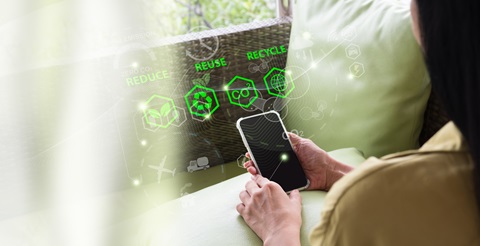Going beyond words: How pictures can measure cross-cultural differences in emotions
Global brands are facing more and more competition from local brands, even as they spend more on their marketing efforts and create greater efficiencies in their supply chains.
by Neil Gains

Global brands are facing more and more competition from local brands, even as they spend more on their marketing efforts and create greater efficiencies in their supply chains. While local brands have many advantages from being on the ground in their markets, perhaps their biggest advantage is their local cultural capital.
For example, in many South East Asian countries, the biggest beauty brands are local and global brands often struggle to build strong businesses despite historical advantages. In Indonesia, there has been a proliferation of local brands, but none have surpassed the success of Wardãh, which now dominates the beauty category there. What does Wardãh know about local consumers that other brands don't? Can international brands use a "makeover" to become more locally relevant or is there more to it than that?
TapestryWorks believes that cultural differences matter in understanding and communicating emotion, and that while emotions are universal they often require a little local translation to be understood. In a recent study, we sought to understand the cultural differences in perceptions of beauty between the UK (my country of birth) and Indonesia (my home from 2000-2004).
Not only did we directly compare the two countries using a battery of emotional concepts, we translated these concepts into imagery that reflects Western values and settings, and separately into imagery that reflects Indonesian values and settings, in order to compare them against each other and against responses based on verbal stimuli.
The topic we chose to explore was female beauty, and our results are based on a sample of 600 women (300 from the UK and 300 from Indonesia) recruited from a range of ages (18-44 years), social classes and geographies (urban, suburban and rural) within each market. Data was collected online and focused on women's motivations and emotional goals from beauty, as well as their current beauty buying behaviors.
If there is one word many would choose to describe the "beauty that women desire for themselves" (the question we asked), it is "confidence". This single word was chosen by 55% of British women and 63% of Indonesian women (they were asked to choose 3 from 36, reflecting 12 motivational segments).

[Figure 1 - Confidence in UK ThinkstockPhotos-167449710.jpeg]
To be precise, Indonesian women chose the phrase percaya diri, which is used to express confidence but might be more accurately translated as "believe in yourself". [The translations used in the study had been through several iterations of translation and back translation.]

[Figure 2 - Confidence in Indonesia shutterstock_562227319.jpg]
Confidence, and the motivational segment it represented, were three times more likely to be chosen than anything else. Does this mean that confidence is the only emotion that is relevant to women in the context of beauty? Is it really so much more important than any other motivation? And does the Bahasa Indonesia phrase percaya diri (believe in yourself) mean the same thing in a local context as does confidence in a British context?
Using visual images to represent the same 12 motivational segments and 36 concepts, there is a much more nuanced, and arguably more realistic, response to the same question ("What is the beauty that you desire for yourself?"). Women's choice of visual stimuli goes beyond confidence to other important needs.
Based on visual concepts, we see that confidence is still very important to women from both countries, but is now first among equals. British women also choose courage (physical and mental strength) as very important to their beauty, and to a lesser extent exploration, fun and innocence. For Indonesian women, Innocence is a very close second to confidence, followed by the need for fun and play.
British women do value confidence, but they see confidence as not just about glamour and attracting attention, but also about mental and physical strength. This comes out in their selection of "Western" images through the choice of an image of a woman in the gym with a well-defined body shape. They also want to be at peace with the world, reflected in the choice of images that reflect balance and calmness, and this comes out strongest in their selection from the Indonesian cultural images that were used.
This aspect of UK women's goals is something we have seen in other qualitative work we have conducted. It is reflected not just as a positive and optimistic view of life, but also the need to avoid feeling bad in a world that is full of temptations to stick your finger up at the world (they have a fear of being badly behaved). Indeed, when asked a question about the "beauty you have today" many actually pick an image of exactly such a rude gesture.
Indonesian women choose similar images, but these generally represent a more optimistic and positive view of life. They also pick images reflecting the need for fun and play (in a Western context), but these shift to images of creativity in an Indonesian cultural context. In this and other studies we see that using images with local cultural context often gives people permission to choose emotions that are normally constrained by local norms.
These differences, especially in the level of optimism that women have are also reflected in the "gap" between the beauty they desire and how they see their beauty as it is today. For British women, the correlation between their current and desired beauty is slightly less than zero, reflecting a high level of dissatisfaction and a large gap between how they are and how they would like to be.
For Indonesian women the correlation is 90%, reflecting a greater degree of comfort with the beauty they have now. This difference is also reflected in their perception of their own body image, with women from the UK rating themselves an average of 5.39 and women from Indonesia an average of 7.64 (on a 10-point scale).
In fact, based on our experience in researching beauty in Indonesia, percaya diri might be better translated as "be yourself" rather than "believe in yourself". TapestryWorks believe that using imagery based on a foundation of a motivational framework, can help businesses tap into the implicit and sub-conscious drivers of behavior much better than standard verbal research approaches (and is much more time and cost efficient too).
Beauty is a particularly emotional topic, but for any brand it is critical to understand the emotional drivers of your customer's behavior. These findings and other experience suggests that visual approaches help to understand and measure these emotions, and also the ways in which culture shapes their local interpretation. For global brands to be locally relevant, they must get closer to local cultures and sensibilities.
About the author
Dr Neil Gains is an ACI Fellow and the owner and founder of TapestryWorks. He is an expert on human and cultural psychology, the author of Brand esSense and a pioneer of sensory branding and the application of emotions in branding. Neil set up TapestryWorks in 2010 to help clients to decode people and culture to weave richer connections from brand strategy through to in-store activation.

.tmb-listing.jpg?Culture=en&sfvrsn=41c3e350_1)
.tmb-listing.png?Culture=en&sfvrsn=d48abb4_1)



